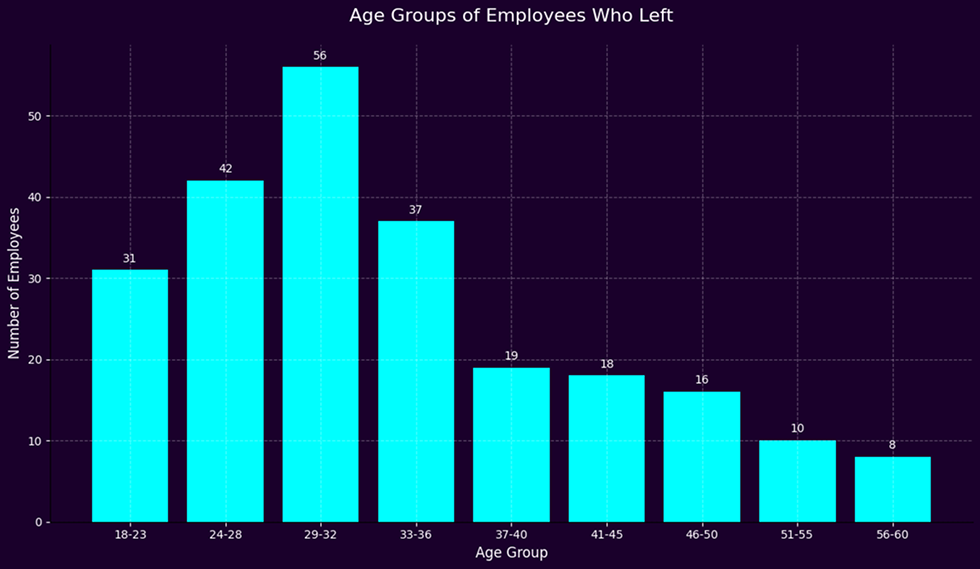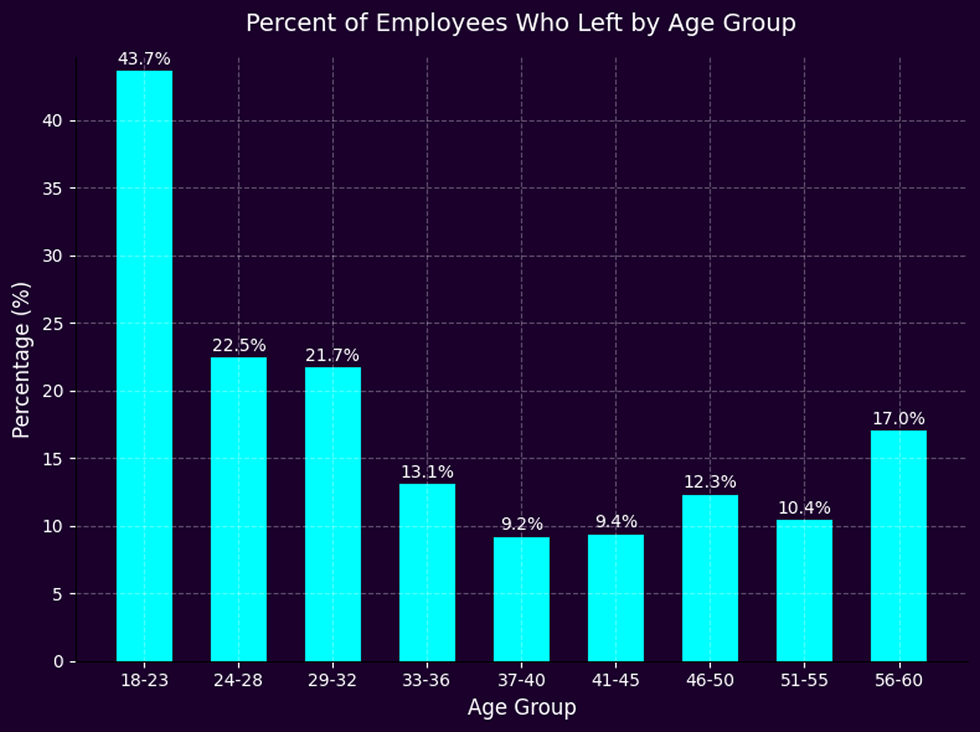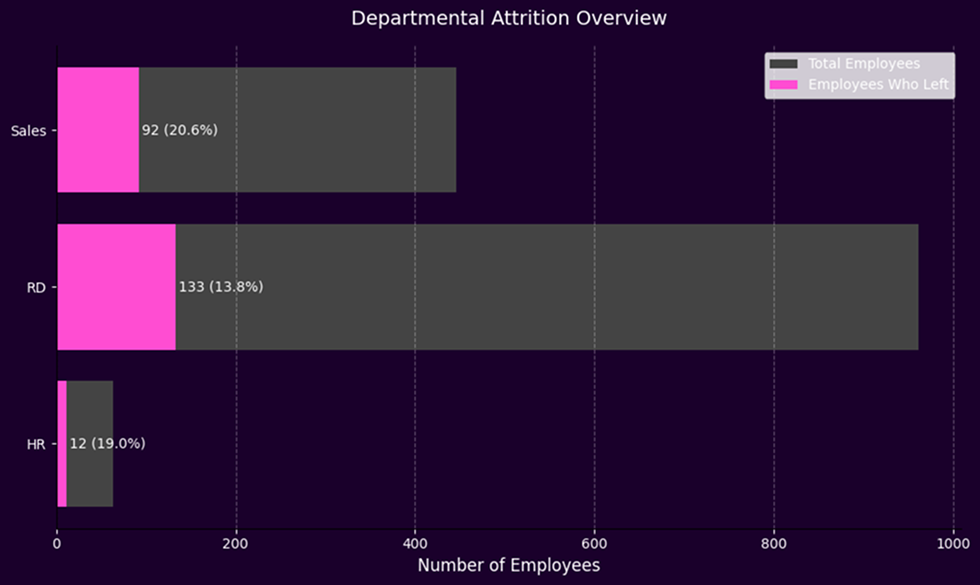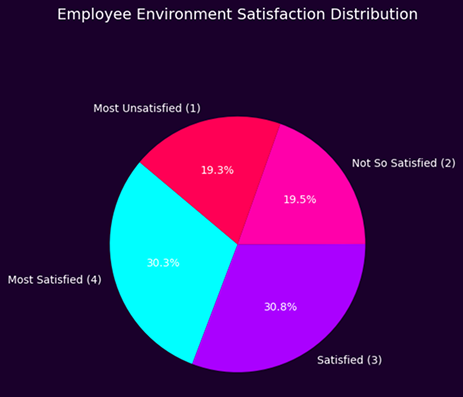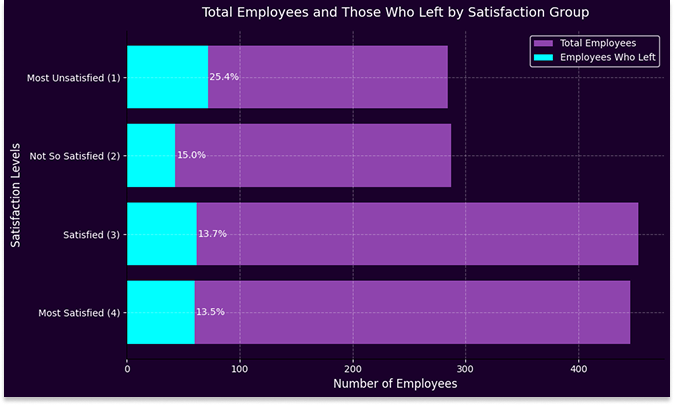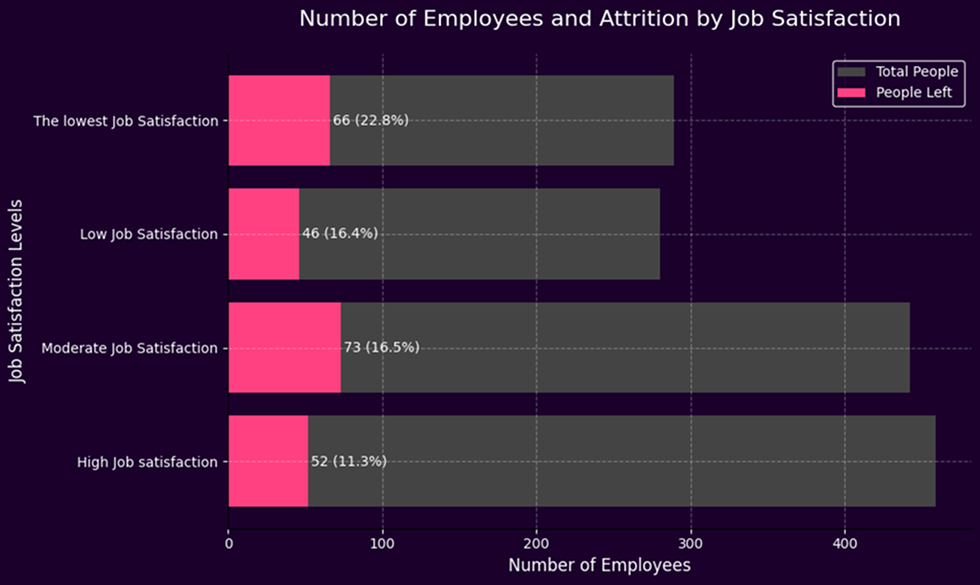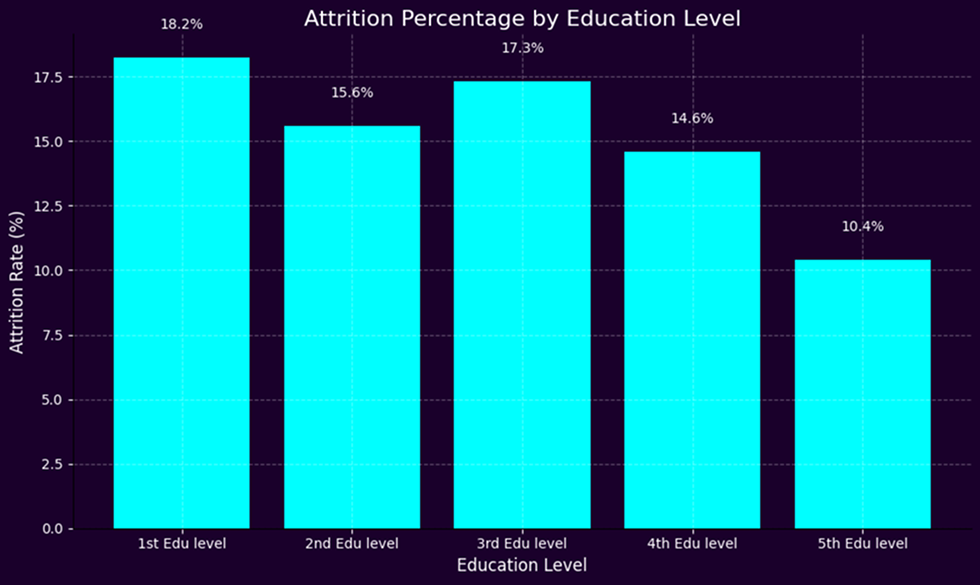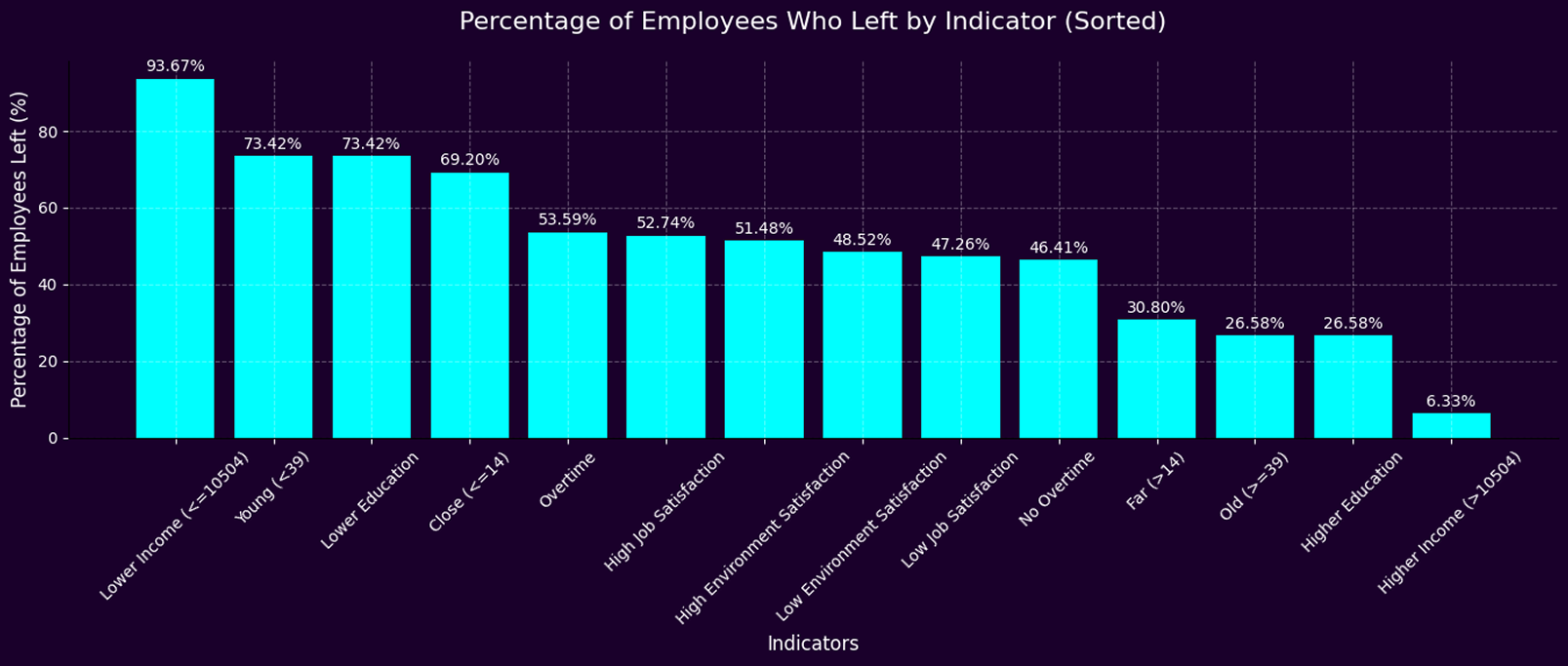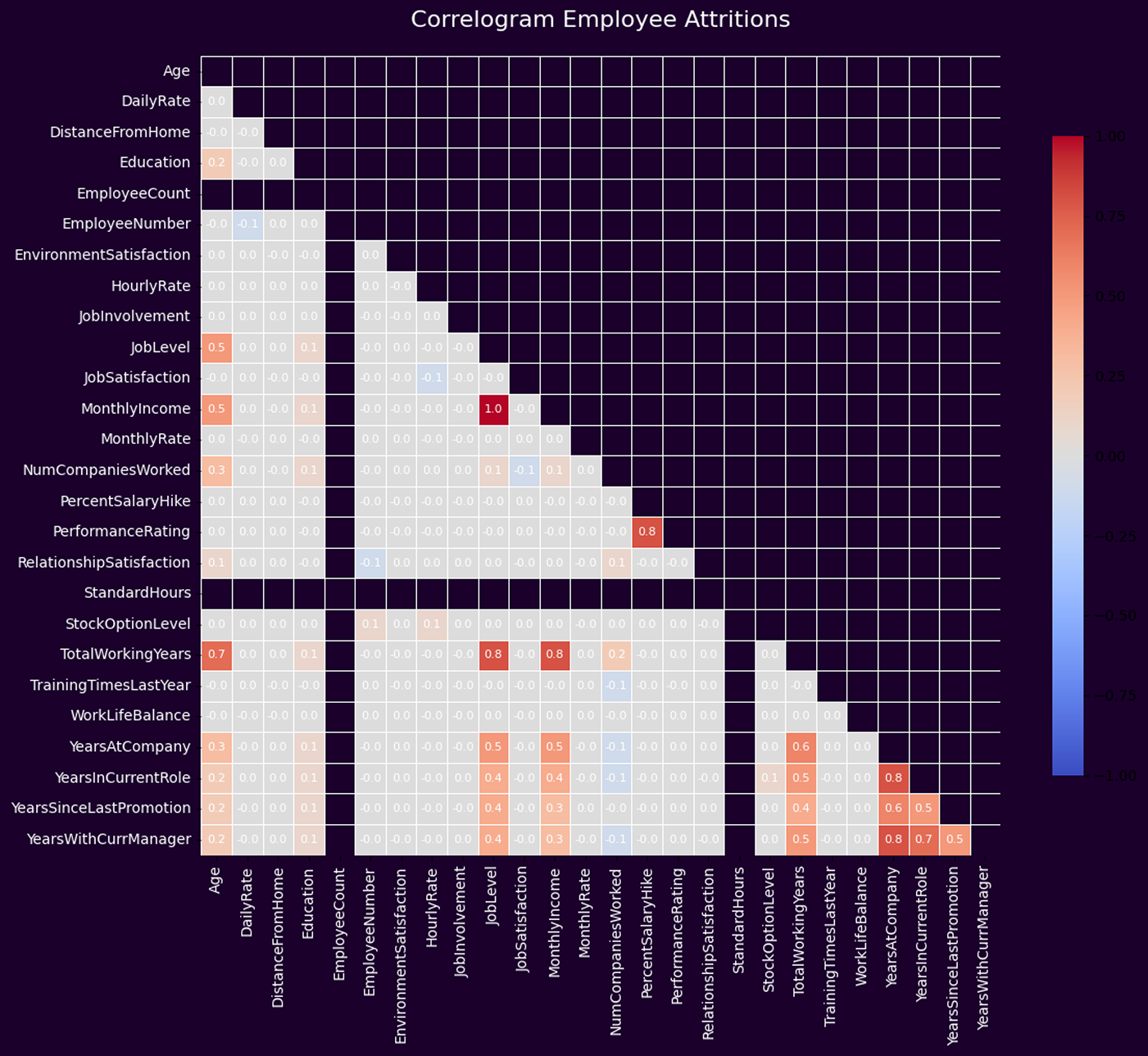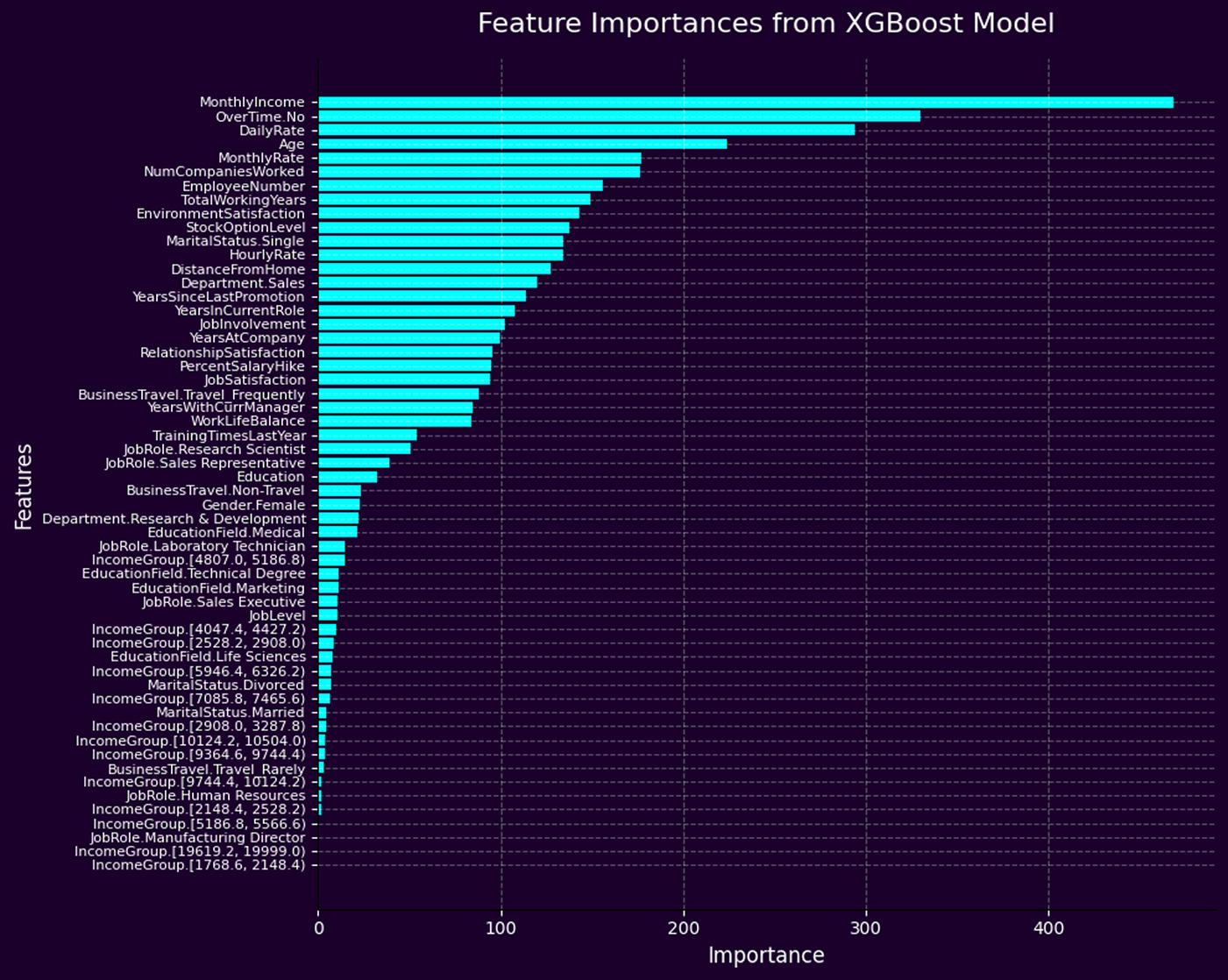Key Indicators & Exploratory Analysis
To understand what drives employee attrition, we conducted a segmented analysis based on several internal indicators. Employees were grouped by characteristics such as age, income, education level, job satisfaction, environmental satisfaction, overtime status, and distance from home. For each group, we measured the percentage of individuals who left the company.
Age was one of the most revealing indicators. While the highest absolute number of leavers came from the 29–32 age group, the highest attrition rate occurred in the youngest employees (18–23), suggesting early-career talent is more prone to churn.
Department affiliation offered another lens into attrition trends. While the largest number of leavers came from the Research & Development (R&D) department—133 employees—this aligns with its size, comprising the majority of the company’s workforce. When adjusting for department size, a more nuanced pattern emerged: the Sales department exhibited the highest attrition rate at 20.63%, followed closely by Human Resources at 19.05%, while R&D showed a comparatively lower rate of 13.84%.
Commute distance showed a noticeable—but not drastic—effect on attrition. While employees living closer (1–10 km) had attrition rates around 13–15%, those farther away (11–26 km) experienced rates rising to over 20%, peaking at nearly 25% for those 23–26 km from work. Although the difference is not sharply pronounced, the upward trend suggests that longer commutes may contribute to increased turnover, especially over 10 km.
Environment satisfaction showed a clear relationship with attrition. While overall satisfaction levels were fairly balanced across the workforce, employees with the lowest satisfaction had the highest attrition rate—25.35%. In contrast, only 13–14% of those who reported being satisfied or very satisfied chose to leave. This trend indicates that dissatisfaction with the work environment plays a measurable role in turnover, though it's not the sole determining factor.
Job satisfaction showed a strong connection with attrition risk. Roughly one-third of employees reported being highly satisfied with their job, and only 11.33% of them ended up leaving the company. In comparison, the attrition rate more than doubled among the most unsatisfied employees, rising to 22.84%. Interestingly, those in the “quite satisfied” and “not so satisfied” categories had nearly equal attrition rates—around 16.5%—suggesting that the biggest retention challenge lies with the most dissatisfied group. These results imply that while boosting employees from moderate to high satisfaction may help, the clearest impact on turnover comes from addressing the drivers of deep dissatisfaction.
Overtime work showed a nuanced relationship with attrition. Among all employees who left the company, 53.59% had worked overtime—only slightly more than the 46.41% who had not. This near-even split suggests that overtime alone may not be a strong predictor of employee departure. However, when analyzing overtime workers specifically, only 30.53% of them left the company, while 69.47% stayed. This indicates that, despite the added workload, most overtime employees remained in their roles, potentially reflecting a higher level of engagement or motivation. Overall, while overtime is often viewed as a stressor, in this case it does not appear to be a dominant factor in driving turnover.
Education level revealed subtle but notable trends in attrition. Although employees with a 3rd-level education made up the largest portion of the workforce (nearly 39%), their attrition rate stood at a moderate 17.3%. Interestingly, the highest attrition rate (18.2%) was observed among those with the lowest education level, despite them comprising only 11.6% of the staff. Conversely, those with the highest education level (5th) not only represented the smallest segment (3.3%) but also showed the lowest attrition rate at just 10.4%. This gradient suggests that higher educational attainment may be loosely associated with greater organizational commitment or better job alignment, though the relationship is not strictly linear.
Income level emerged as a powerful predictor of attrition. The data shows a clear inverse relationship between salary and turnover—employees in the lowest income bracket (1st group) had an attrition rate of 50%, while those in the highest brackets (7th–9th groups) had attrition rates near or below 8%, with the 7th group experiencing no attrition at all. Interestingly, nearly 57% of the company’s workforce was concentrated in the 2nd and 3rd income groups, where attrition was still notably elevated at 26% and 12%, respectively. This trend suggests that insufficient compensation—especially in the lower to middle income bands—can significantly impact employee retention, highlighting the importance of competitive and equitable pay structures in minimizing workforce churn.
A unique combination stood out: young, underpaid, and undereducated employees accounted for over 54% of total attrition, indicating a critical vulnerability among early-career, lower-resourced staff.
Finally, we generated a correlation heatmap using numerical variables to understand the underlying relationships. This correlogram allowed us to isolate independent predictors of attrition and reduce multicollinearity before building machine learning models. It also reinforced the role of financial and career-stage variables as primary levers in retention.

